Two Blocks P and Q of masses 5 kg: and 10 kg espevelv re placed on a rough horizontal surface ta to central force ct 25 N is applied on the block Pas shown in figure The frictiona force exerted oy the surface or the block Q will be (g=10m^2)
10 N
5 N
50 N
40 N
The correct Answer is:B
To solve the problem, we need to determine the frictional force exerted by the surface on block Q when a force is applied to block P. Here’s a step-by-step solution:
Step 1: Identify the given data
- Mass of block P (m₁) = 5 kg
- Mass of block Q (m₂) = 10 kg
- Applied force on block P (F) = 25 N
- Acceleration due to gravity (g) = 10 m/s²
Step 2: Calculate the normal forces acting on both blocks
The normal force (N) acting on each block can be calculated using the formula:
N=m⋅g
For block P:
NP=m1⋅g=5kg⋅10m/s2=50N
For block Q:
NQ=m2⋅g=10kg⋅10m/s2=100N
Step 3: Determine the maximum static friction for both blocks
Assuming the coefficients of static friction (μ_s) are given as follows:
- For block P, μ_s = 0.4
- For block Q, μ_s = 0.5
The maximum static friction force (F_s) can be calculated using:
Fs=μs⋅N
For block P:
FsP=μsP⋅NP=0.4⋅50N=20N
For block Q:
FsQ=μsQ⋅NQ=0.5⋅100N=50N
Step 4: Analyze the forces acting on block P
The net force acting on block P is the applied force minus the friction force acting on it. The friction force on block P will be equal to the friction force on block Q since they are in contact and block Q will resist the motion of block P.
Let Ffriction be the friction force exerted by block Q on block P. According to Newton's third law:
Ffriction=FsQ
Step 5: Calculate the frictional force on block Q
Since the applied force on block P is 25 N and the maximum static friction on block P is 20 N, the friction force on block Q will be equal to the net force acting on block P.
The net force acting on block P can be calculated as:
Fnet=F−FsP=25N−20N=5N
Thus, the frictional force exerted by the surface on block Q is:
Ffriction=5N
Final Answer
The frictional force exerted by the surface on block Q is 5 N.
---
- Mass of block P (m₁) = 5 kg
- Mass of block Q (m₂) = 10 kg
- Applied force on block P (F) = 25 N
- Acceleration due to gravity (g) = 10 m/s²
The normal force (N) acting on each block can be calculated using the formula:
N=m⋅g
NP=m1⋅g=5kg⋅10m/s2=50N
NQ=m2⋅g=10kg⋅10m/s2=100N
Assuming the coefficients of static friction (μ_s) are given as follows:
- For block P, μ_s = 0.4
- For block Q, μ_s = 0.5
Fs=μs⋅N
FsP=μsP⋅NP=0.4⋅50N=20N
FsQ=μsQ⋅NQ=0.5⋅100N=50N
The net force acting on block P is the applied force minus the friction force acting on it. The friction force on block P will be equal to the friction force on block Q since they are in contact and block Q will resist the motion of block P.
Ffriction=FsQ
Since the applied force on block P is 25 N and the maximum static friction on block P is 20 N, the friction force on block Q will be equal to the net force acting on block P.
Fnet=F−FsP=25N−20N=5N
Ffriction=5N
The frictional force exerted by the surface on block Q is 5 N.
Similar Questions
A block of mass √3/10kg is placed on a rough horizontal surface as shown in the figure. A force of 1N is applied at one end of the block and the block remains stationary. The normal force exerted by the sruface on the block acts(g=10m/s2)
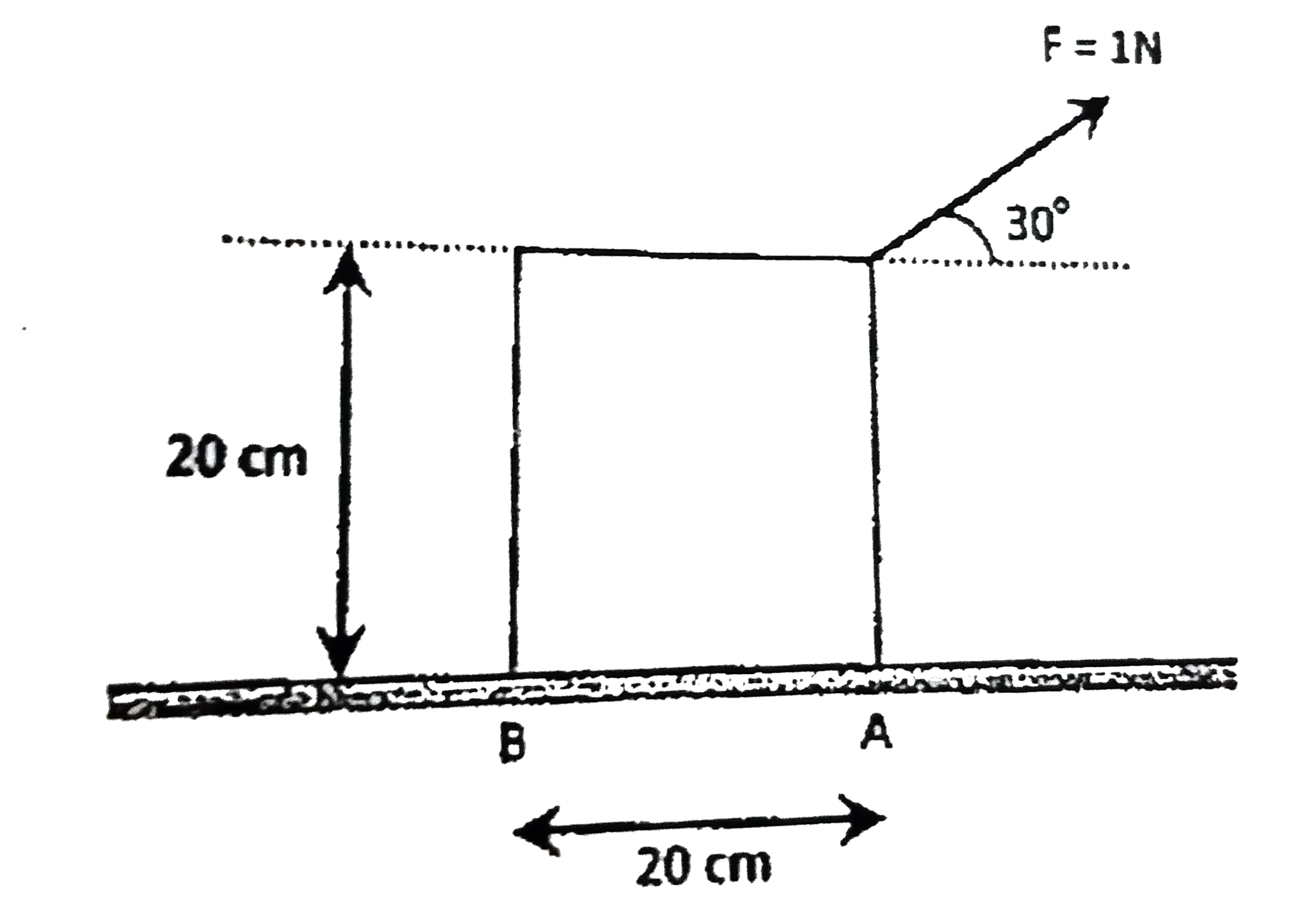
View SolutionA block of mass 1 kg in kept on a rough horizontal surface with μs=0.1 . A force of 0.5 N is applied as shown in the figure. What is the frictional force applied by ground on the block?

View SolutionA block of mass 3kg is at rest on a rough inclined plan as shown in the Figure. The magnitude of net force exerted by the surface on the block will be
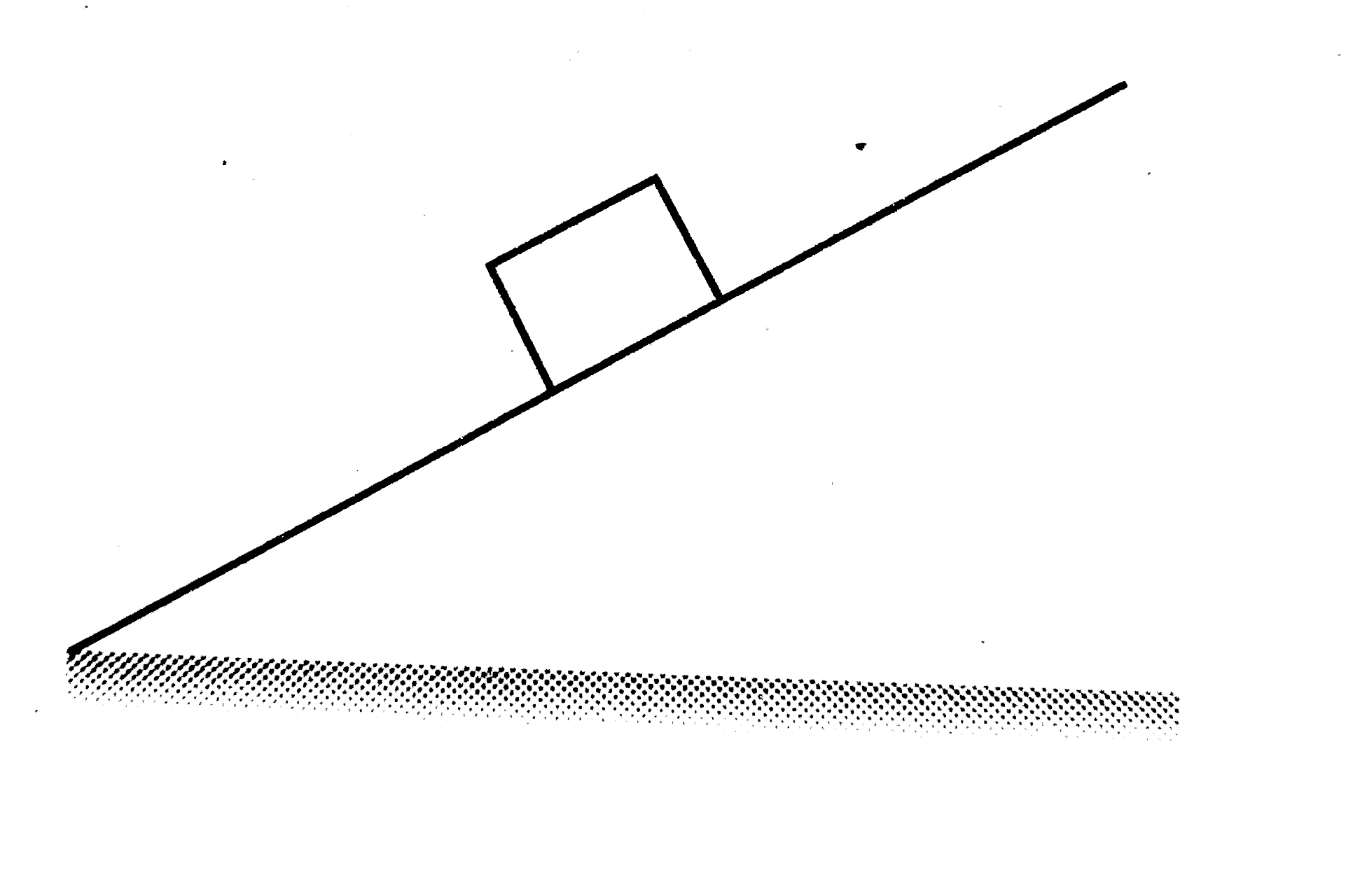
View SolutionTwo blocks of masses 4kg and 6kg are kept on a rough horizontal surface as shown. If the acceleration of 6kg block is 5n, then n is :

View SolutionThree blocks A , B and C of masses 4kg , 2kg and 1kg respectively are in contact on a frictionless surface, as shown. If a force of 14Nisappliedonthe4kgblock,thenthecontactforcebetweenAandB is.
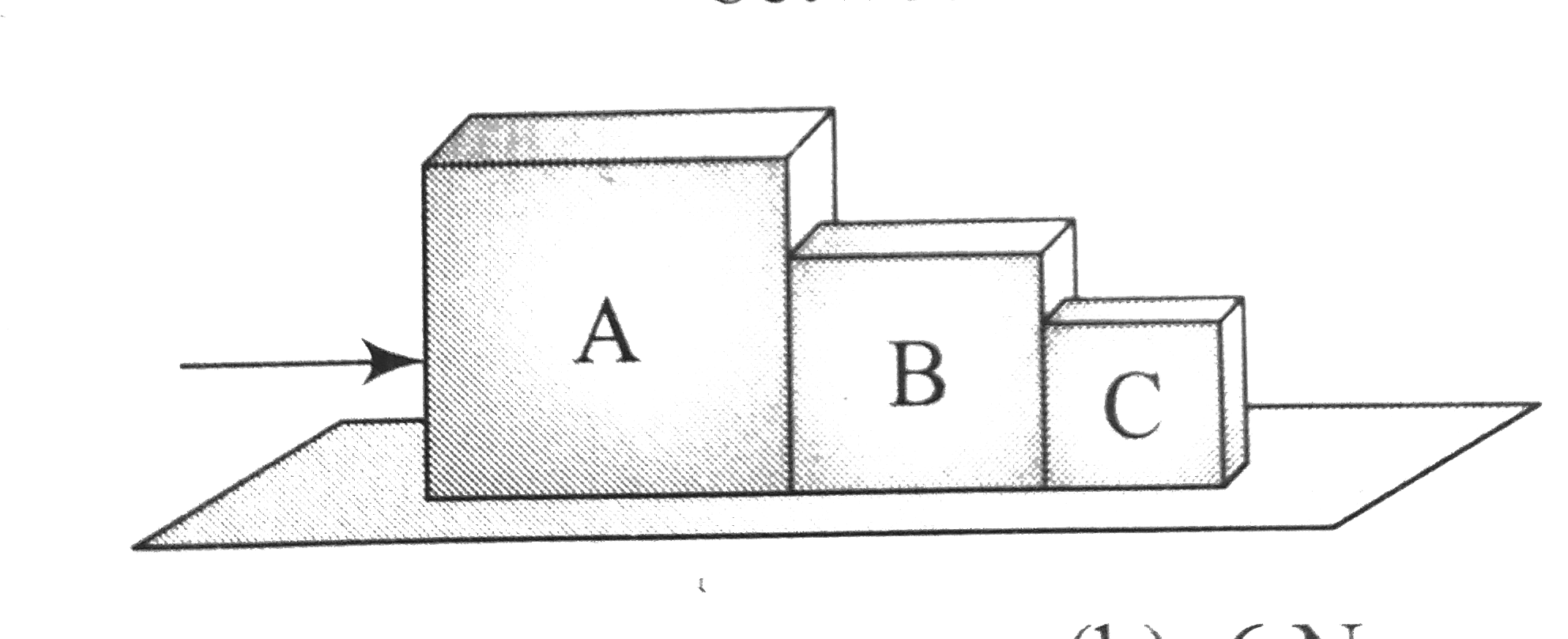
View SolutionThree blocks A , B and C of masses 4kg , 2kg and 1kg respectively are in contact on a frictionless surface, as shown. If a force of 14Nisappliedonthe4kgblock,thenthecontactforcebetweenAandB is.

View SolutionA block of mass 10kg is placed on a horizontal surface as shown in the figure and a force F=100N is applied on the block as shown, in the figure. The block is at rest with respect to ground. If the contact force between block and ground is 25n (in Newton) then value of n is : (Takeg=10m/s2)
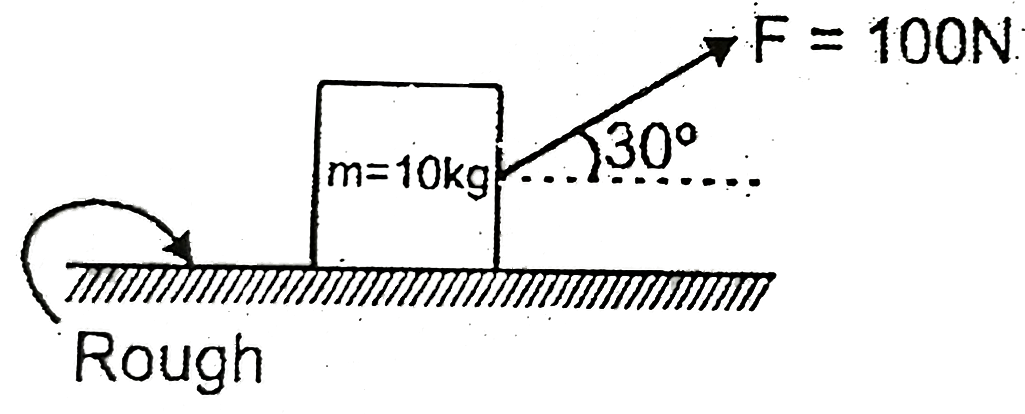
View SolutionTwo blocks of masses 1 kg and 2 kg are placed in contact on a smooth horizontal surface as shown in fig. A horizontal force of 6N is applied d(a) on a 1-kg block. Find the force of interaction of the blocks.
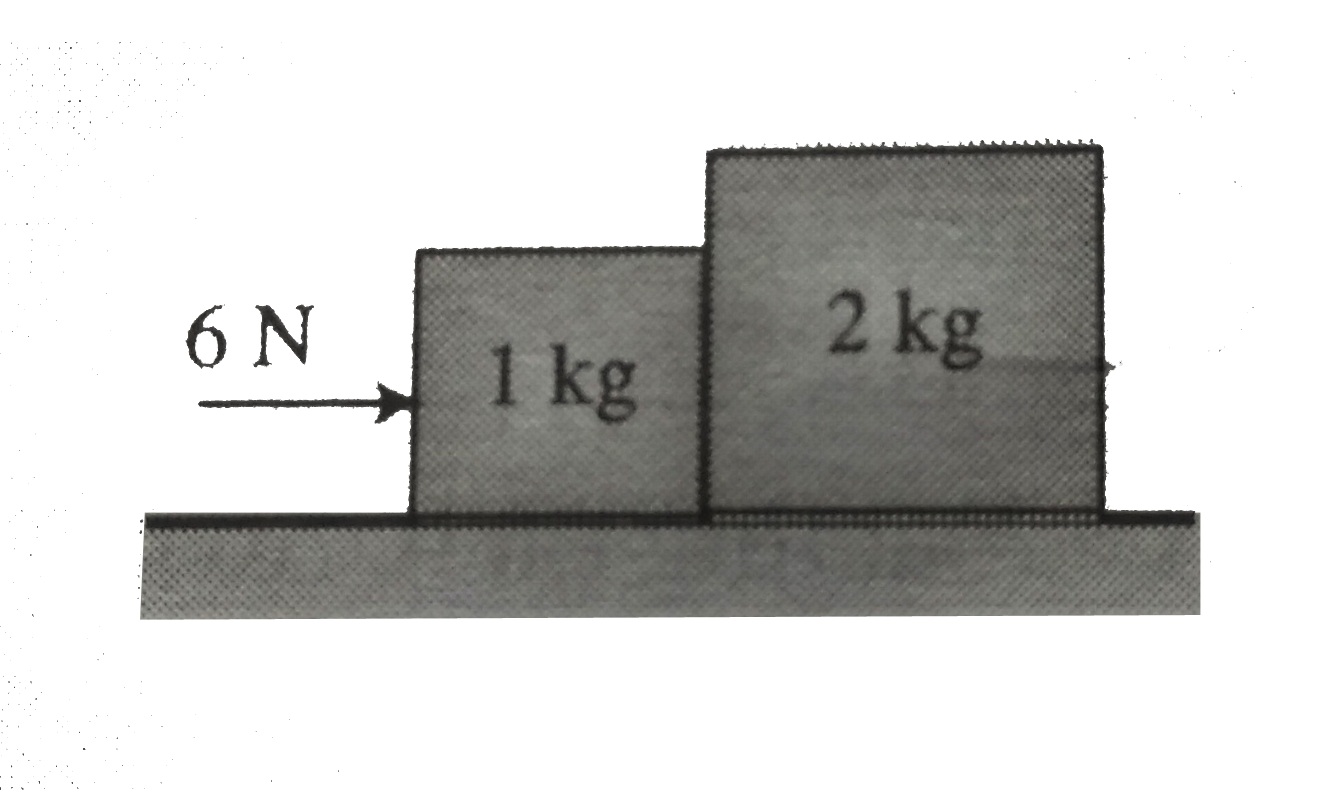
 .
.
View SolutionA block is kept on a rough horizontal surface. A variable horizontal force is acting on the block as shown in the figure. At t=0, block is at rest. Kinectic energy of block at t=5sec will be (g=10m/s2)

View SolutionA block of mass 20kg is placed on a rough horizontal plane and a horizontal force of 12N is applied. If coefficient of friction is 0.1 the frictional force acting on it is,
View Solution
